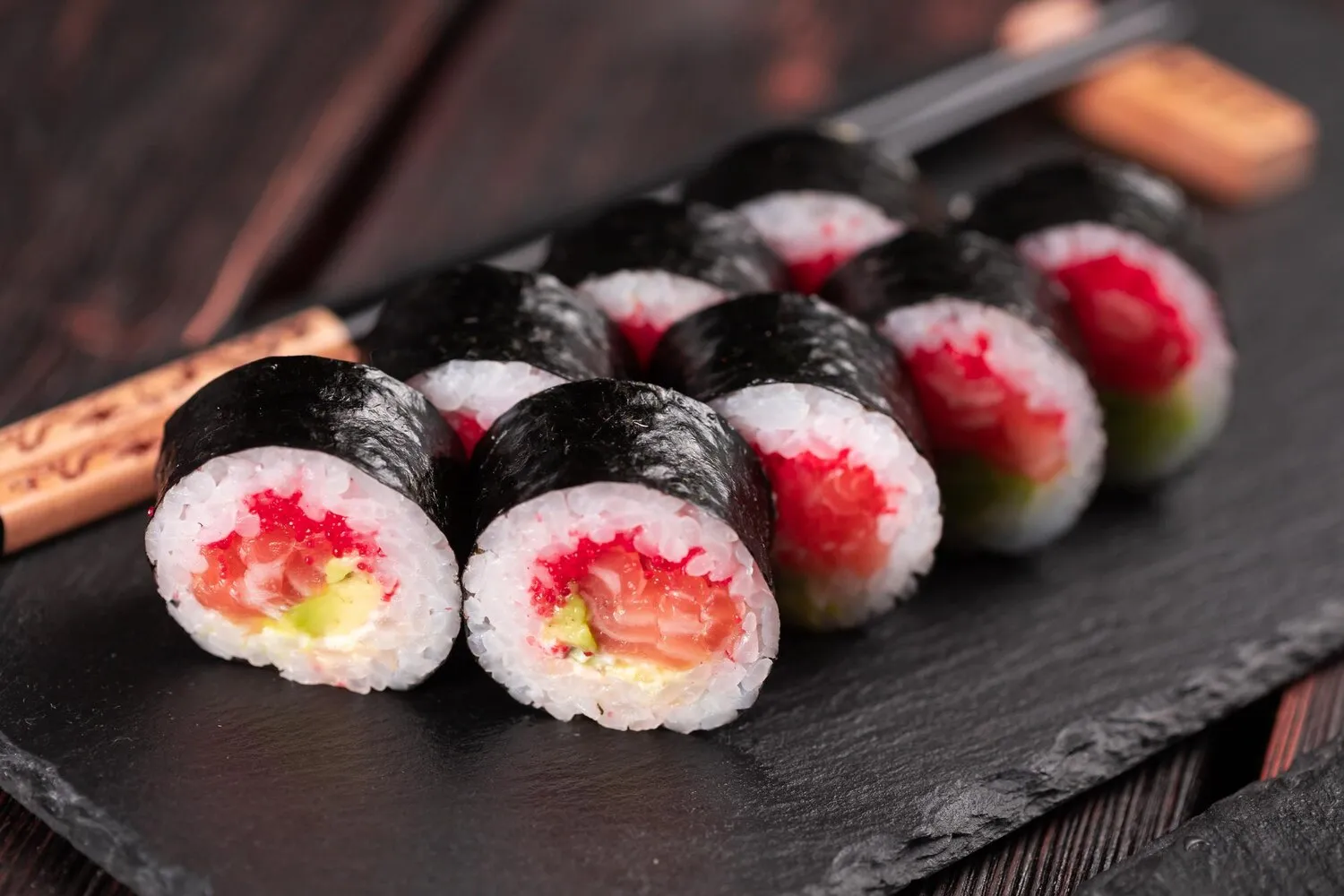
Maki
A variety of maki rolls. The exact selection is not specified in the available search results
Nutrition Facts
* The % Daily Value (DV) tells you how much a nutrient in a serving of food contributes to a daily diet. 2,000 calories a day is used for general nutrition advice.
Maki sushi's origins can be traced back to narezushi, an ancient method of preserving fish with fermented rice. Over time, this evolved into haya-zushi, where rice was consumed along with the fish, rather than just used for preservation. Maki, as we know it today, developed as a way to easily eat sushi without getting hands dirty, particularly in bustling environments.
Maki sushi is deeply ingrained in Japanese culinary culture, representing artistry, precision, and a celebration of fresh ingredients. It's a staple at both casual and formal occasions.
Presentation and Artistry
Maki sushi is often prepared with a focus on aesthetics. The visual appeal of the rolls, with their colorful fillings neatly arranged, is considered an important part of the dining experience. Chefs often take pride in their knife skills and presentation techniques.
Sushi Etiquette
Specific etiquette surrounds eating sushi, including using chopsticks correctly, dipping only the topping (not the rice) into soy sauce, and eating the sushi in one bite to fully appreciate the flavors. Pickled ginger is used as a palate cleanser between different types of sushi.
Social Dining
Maki is commonly enjoyed in social settings, such as family dinners or gatherings with friends. Sharing a platter of assorted maki rolls is a typical way to enjoy the variety of flavors and ingredients.
Maki offers a diverse flavor profile, balancing the subtle sweetness and acidity of sushi rice with the umami of nori seaweed and the freshness of various fillings.
The primary flavor components include the vinegared sushi rice (seasoned with rice vinegar, sugar, and salt), the salty and slightly briny taste of nori seaweed, and the diverse tastes contributed by the fillings. These fillings can range from seafood like tuna, salmon, and shrimp, to vegetables like cucumber, avocado, and carrots, and even cooked items like egg or imitation crab. Common condiments like soy sauce, wasabi, and pickled ginger further enhance and diversify the overall flavor experience.
Rice Preparation
Use short-grain Japanese rice and rinse it thoroughly before cooking. After cooking, season the rice with a mixture of rice vinegar, sugar, and salt. Allow the rice to cool slightly before using.
Nori Handling
Use high-quality nori sheets. Slightly warm the nori over a low flame to enhance its flavor and crispness. Avoid exposing nori to moisture before using, as it can become soggy.
Rolling Technique
Use a bamboo rolling mat (makisu) to help shape the maki. Moisten the mat with water to prevent the rice from sticking. Apply even pressure while rolling to create a firm and compact roll.
Knife Skills
Use a sharp, thin-bladed knife to cut the maki into even pieces. Moisten the knife blade with water between cuts to prevent the rice from sticking. Cut with a smooth, decisive motion.
Explore additional Sushi Rolls dishes and restaurants
Explore Sushi RollsDiscover top dining spots and culinary experiences in La Spezia.
Explore La SpeziaLearn more about the food culture, restaurant scene, and culinary heritage of Italy.
Explore Italy